Last Updated on July 23, 2024 by teamobn
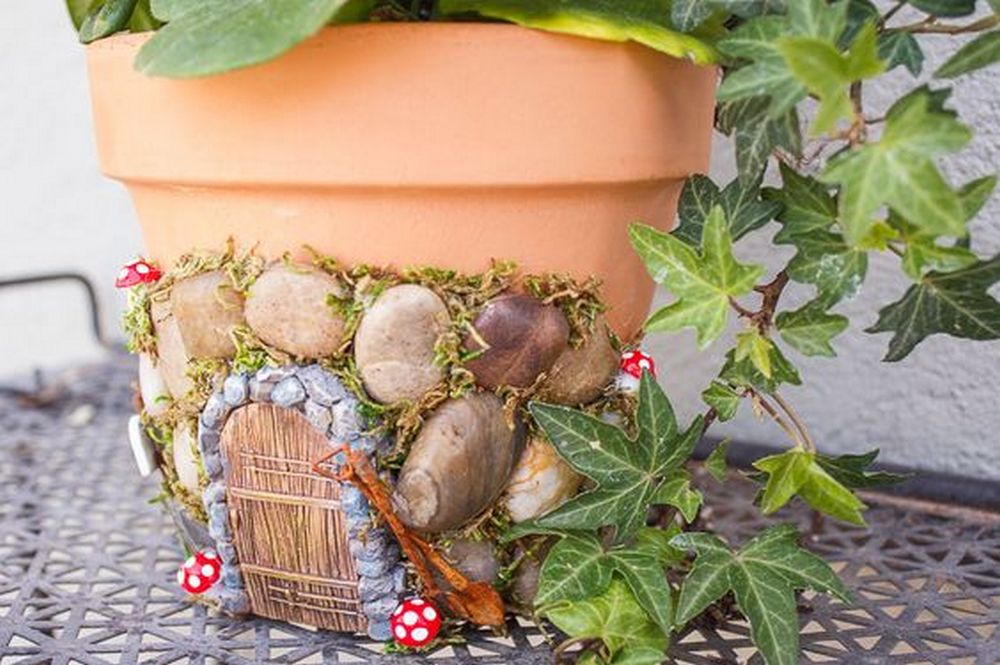
Fairy-themed décor has been a popular trend in recent years. Fairy houses, lights and bottles are just a few of the ways you can add a touch of magic to your home. Whether you want to add a bit of whimsy to your décor or create a truly enchanted space, incorporating some fairy-themed items is a great way to do it.
Fairy lights are a popular choice for adding a bit of magic to any space. They come in a variety of styles and can be used to create a variety of looks. Fairy bottles are another popular way to add a touch of magic to your home. They can be used to create beautiful displays or used as functional pieces.
When it comes to fairy crafts, there’s certainly no shortage of adorable options to choose from. I remember coming across these fairy house planters and instantly falling in love. I knew I had to have them in my garden. Not only are they visually appealing, but they also add a touch of magic and whimsy.

This fairy house planter project is a great way to add both beauty and function to your home. It’s simple and inexpensive, and it’s a great way to decorate those boring pots. You can use any type of pot for this project, but terra cotta pots work best. Plus, they add a rustic touch that really brings the fairies to life.
I was really pleased with how the fairy house planter added life to my plant pots and how it complemented my landscape. It was a great addition to my home and I would highly recommend it to anyone looking to add a bit of magic to their plants.
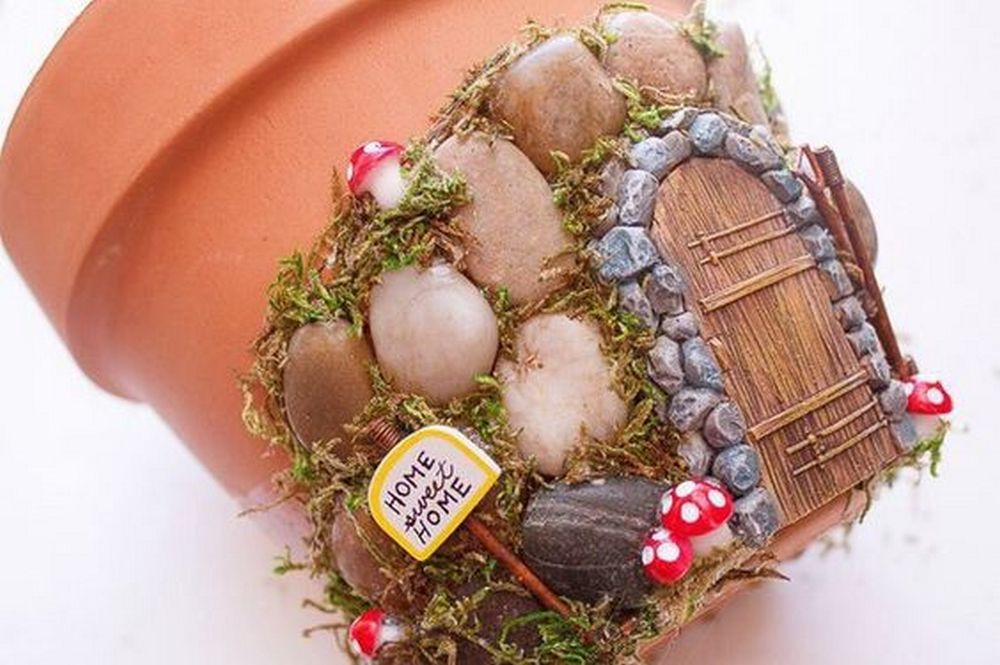
If you’re looking for a fun and whimsical project to add some magic to your garden, why not try making your own fairy house planters? These simple DIY planters are easy to make and can be customized to suit any taste. Plus, they make a great home for the fairies that live in your garden!
Contents [show]
Building a Fairy House Planter
Materials
- Terra cotta pot
- Gorilla glue
- 527 multi-purpose glue
- Decorative stones
- Reindeer moss
- Resin door
- Fairy outdoor seating
Steps
There’s something satisfying about being able to decorate your own fairy house planter. You get to choose the perfect spot for it, fill it with beautiful plants, and add all the little details that make it special. Plus, it’s a great way to add a little bit of magic to your garden.
For this fairy house project, you can start with your terra cotta pot, if it is recycled, you can first clean it but if you bought a new one, you can go ahead and start decorating them.
Once you have cleaned your terra cotta pot, you can use a strong adhesive like Gorilla Glue to start decorating it. The first step is to glue on the Fairy door. Be patient while the glue dries, and use something to hold the door in place if necessary.
After you’ve added the basic features to your fairy house planter, you can start adding other accessories to create a more realistic scene. Reindeer moss can be used to fill in any gaps between accessories, giving your fairy house planter a lifelike appearance.
Click on any image to start the lightbox display. Use your Esc key to close the lightbox.
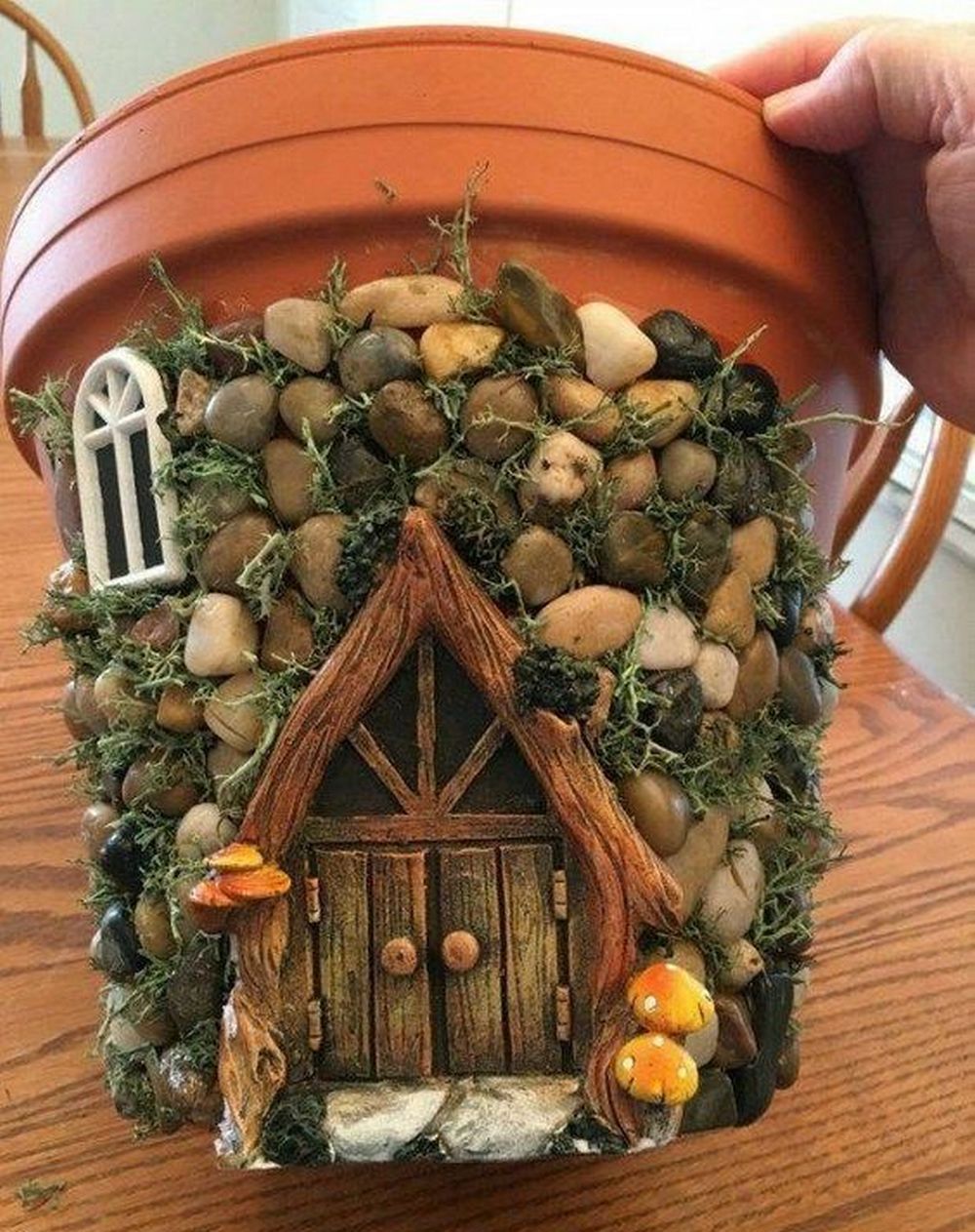
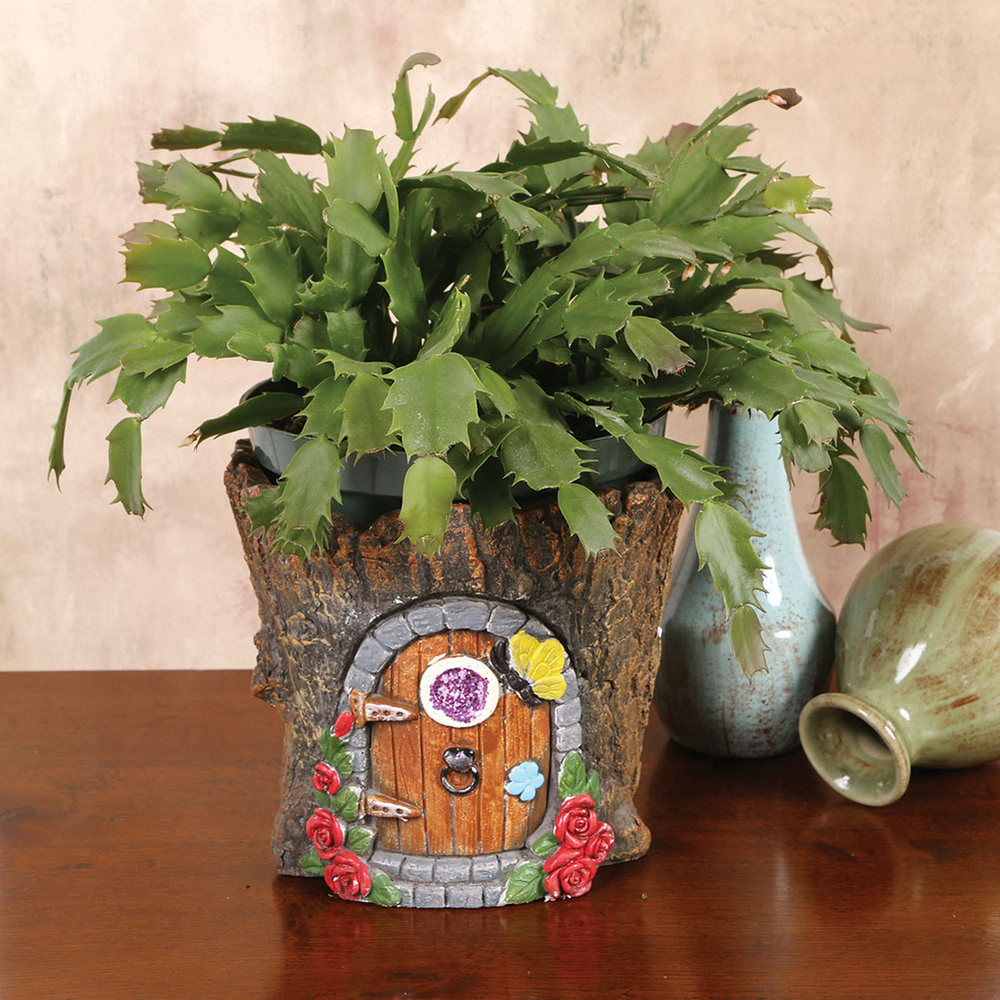

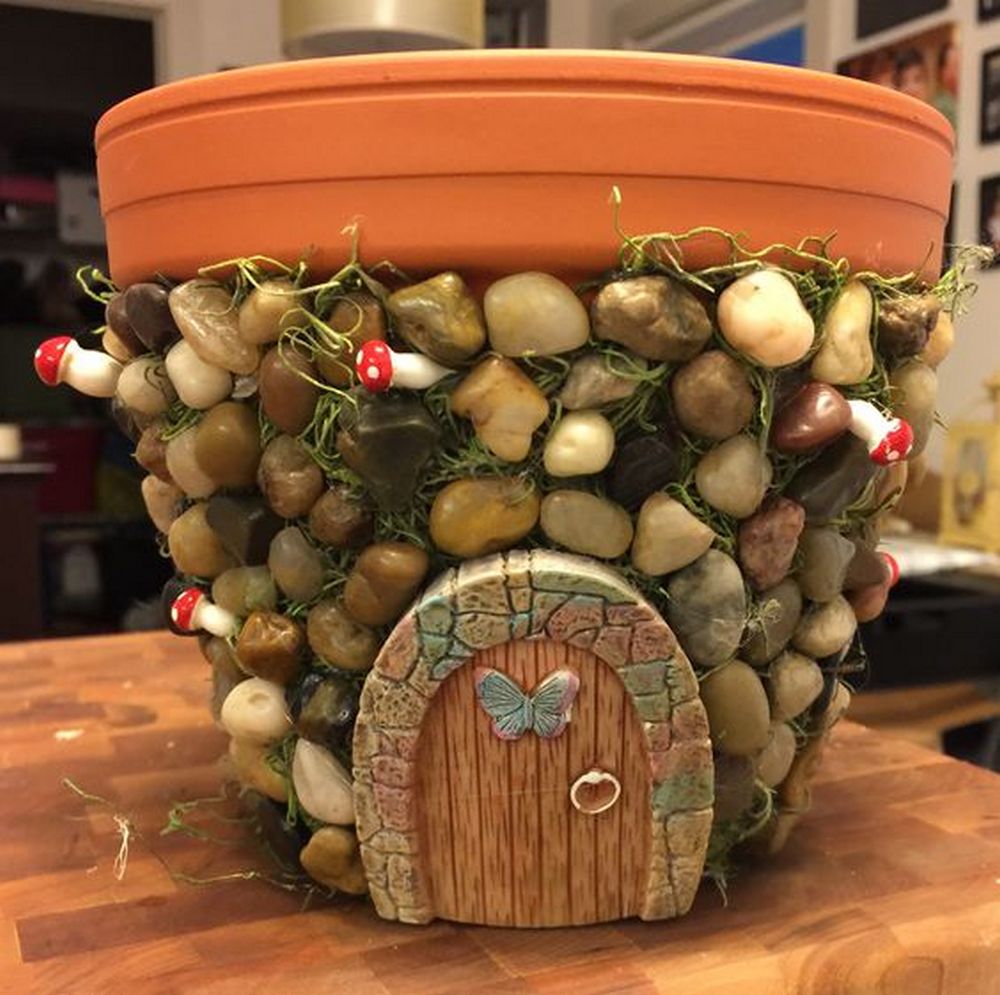


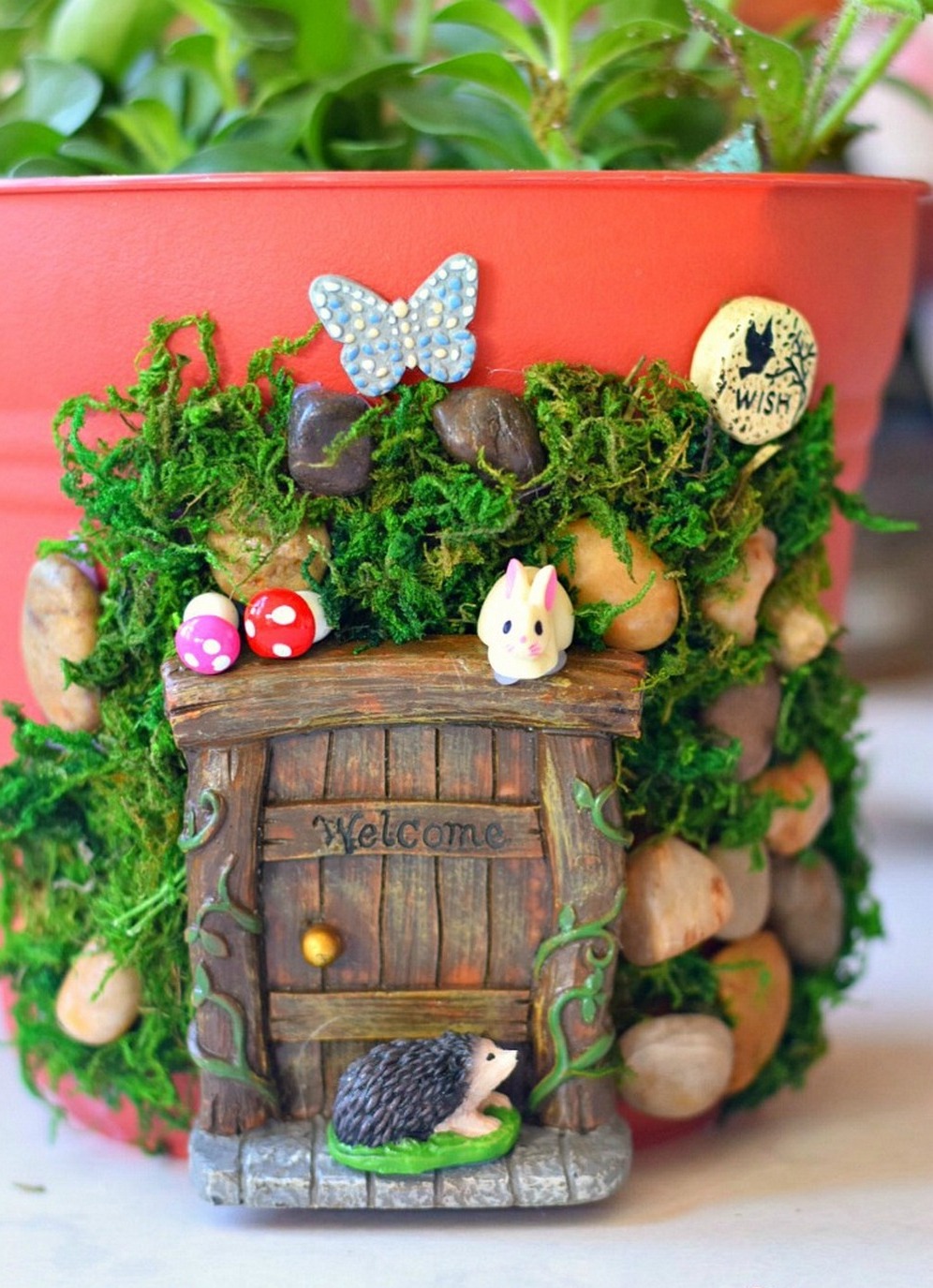
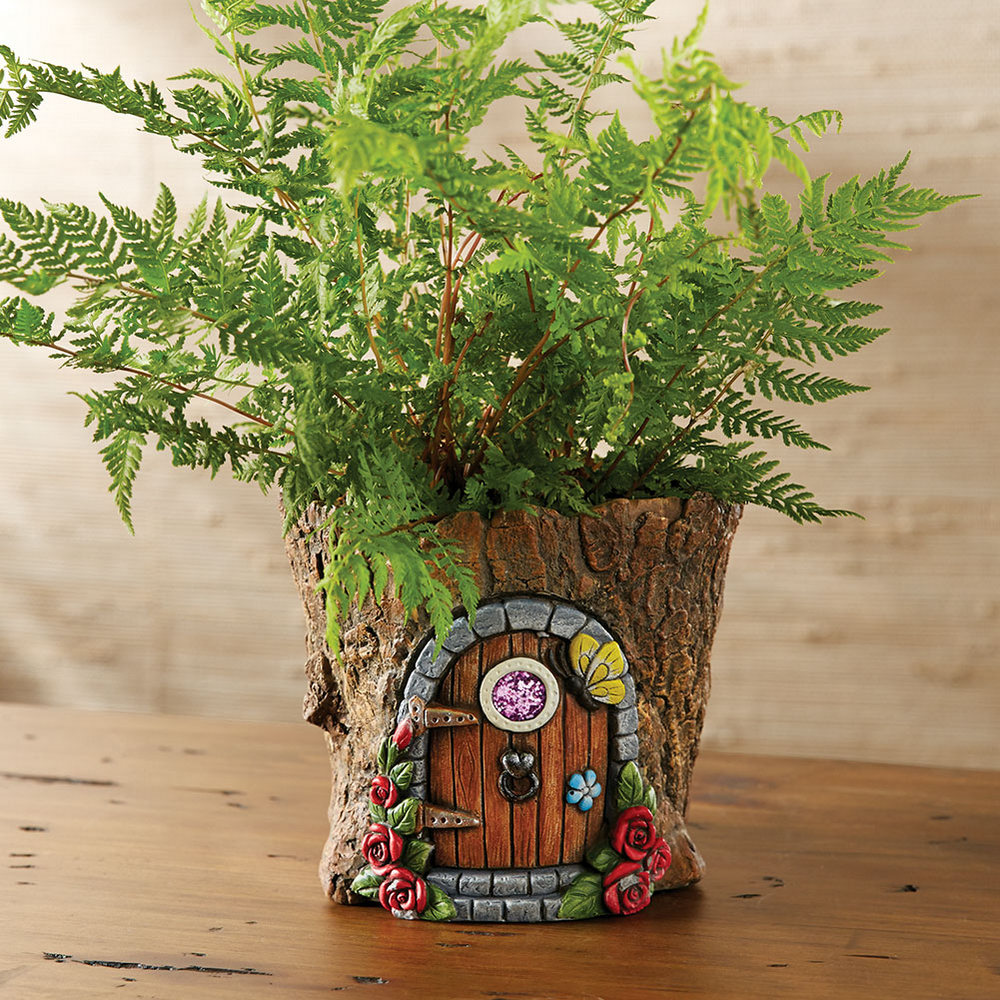
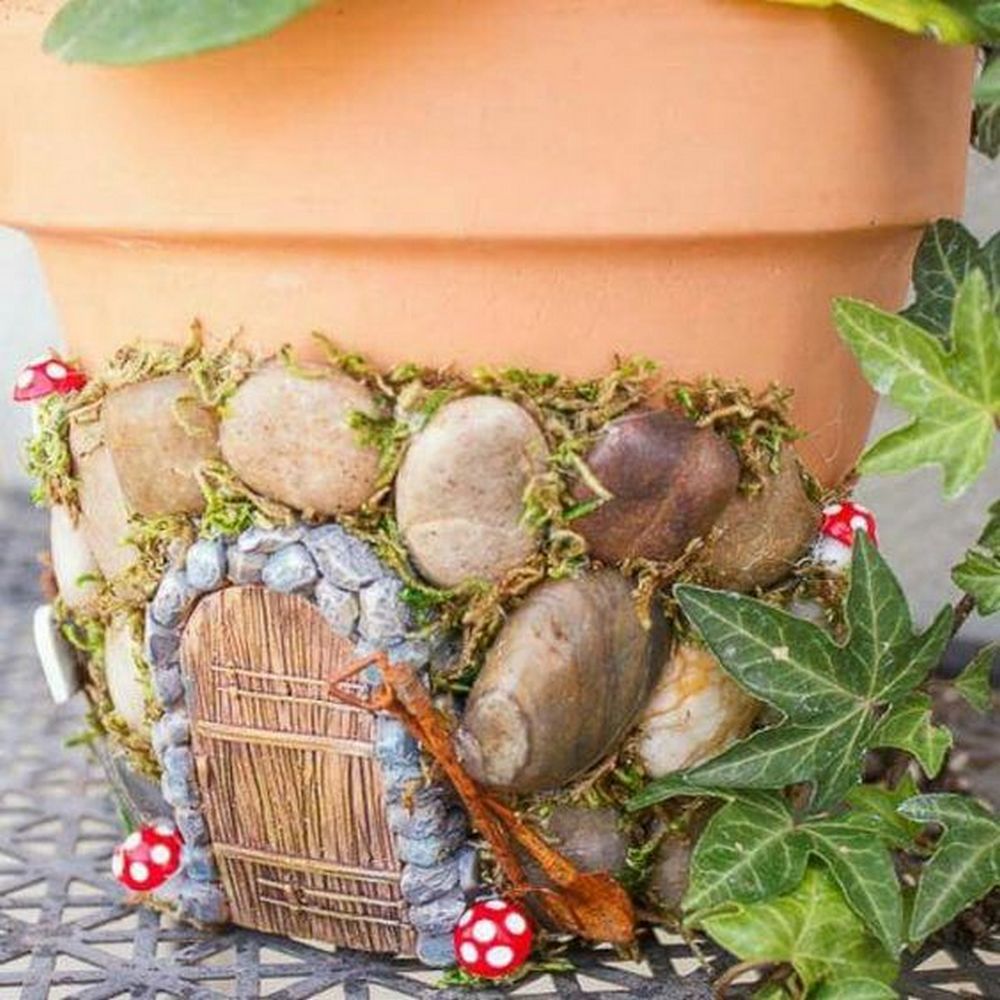
Thanks to lifecreativelyorganized for this great project. You can get step-by-step instructions here…
Choosing Plants for Your Fairy House Planter
Creating a fairy house planter is an enchanting way to add a little magic to your garden. The plants you choose play a crucial role in setting the scene and bringing your miniature landscape to life. Here are some ideal plants that thrive in small spaces and contribute to the whimsical aesthetic of a fairy garden.
Small and Compact Plants
Opt for plants that stay small, as they maintain the scale necessary for a fairy garden to look realistic. Some great options include baby tears (Soleirolia soleirolii), which offer a lush, green carpet resembling a fairy’s lawn. Another excellent choice is Irish moss (Sagina subulata), known for its fine texture and soft, moss-like appearance.
Flowering Plants
Flowering plants add color and variety to your fairy house planter. Consider using small varieties of pansies or miniature daisies, which provide a burst of color without overwhelming the tiny garden. Alpine phlox (Phlox subulata) is another beautiful option that produces small, star-shaped flowers in spring.
Succulents and Cacti
Succulents and cacti are perfect for fairy house planters due to their minimal water needs and varied, interesting shapes. Hen and chicks (Sempervivum tectorum) and baby jade (Portulacaria afra) are fantastic choices. These plants can mimic miniature trees or rocky landscapes, enhancing the mythical feel of your planter.
Ferns and Vines
Small ferns like the lemon button fern (Nephrolepis cordifolia) provide a lush, verdant backdrop, mimicking a fairy forest. Creeping vines, such as creeping fig (Ficus pumila), can be trained around the fairy house or along the edges of the pot, creating a beautifully overgrown look.
Selecting the right plants is just the beginning. By combining different textures, colors, and heights, you can create a captivating and cohesive fairy house planter that will enchant all who see it.
Maintaining Your Fairy House Planter
Maintaining a fairy house planter ensures that your miniature garden stays beautiful and enchanting all year round. Just like any garden, a fairy house planter requires care and attention. Below are comprehensive tips to help you keep your fairy garden in top shape, ensuring its magic remains alive and vibrant.
Regular Watering
- Consistent Moisture is Key: Fairy house planters often contain small plants with shallow root systems that can dry out quickly. Check the soil moisture regularly—ideally every other day—and water lightly. A spray bottle can be a great tool for this, as it prevents overwatering which can easily displace the miniature accessories and plants.
- Adjust Watering by Season: In warmer months, your fairy garden might need more frequent watering compared to cooler months. Be mindful of changes in weather conditions and adjust accordingly to prevent either waterlogging or drying out.
Light and Temperature Control
- Optimal Sunlight: Most fairy gardens thrive in partial shade. Direct sunlight can be too harsh for the delicate plants typically used in fairy gardens, leading to scorched leaves. Aim for a spot that receives morning sunlight and is shaded in the hotter parts of the day.
- Protect from Extreme Temperatures: If you live in a region with extreme weather, consider moving your fairy house planter indoors or to a sheltered area during excessive heat or cold. This helps in avoiding frost damage or sunburn.
Pruning and Tidying
- Regular Pruning: Keep your plants healthy and well-shaped by regular pruning. This not only helps in maintaining the scale of your fairy garden but also encourages denser growth, keeping plants lush and compact.
- Clean Up Dead Leaves: Regularly remove dead leaves and debris. This not only keeps your fairy garden looking neat but also prevents the growth of mold and pests, which can thrive on decaying plant material.
Soil and Fertilization
- Refresh the Soil Annually: Over time, soil in planters can become compacted and nutrient-depleted. Annually refresh the top layer of soil or replace it entirely to ensure your plants have a rich, fertile medium to grow in.
- Use Diluted Fertilizer: Since the plants in fairy gardens are often small and delicate, use a diluted liquid fertilizer to avoid overpowering them with nutrients, which can be more harmful than beneficial. Fertilize sparingly, preferably during the growing season.
Pest and Disease Management
- Watch for Pests: Keep an eye out for common pests like aphids, spider mites, and whiteflies. If you spot pests, use a gentle insecticidal soap or neem oil treatment. Avoid harsh chemicals, as these can damage the small plants and decorations.
- Prevent Diseases: Good air circulation is crucial for preventing fungal diseases, which can be common in dense, moist environments. Ensure your fairy garden is not overcrowded and trim any plants that may block air flow.
Seasonal Adjustments
- Adapt for Seasons: Each season might require different care strategies. For example, in autumn, you may need to clear fallen leaves that could smother your plants, while in spring, it might be time to add new plants or brighten up the garden with fresh mulch.
Decor and Structure Maintenance
- Regular Checks on Decorations: Fairy garden decorations can deteriorate over time. Check them regularly and repair or replace any items that have faded, broken, or gone missing. This keeps the garden’s charm and character intact.
- Stabilize Structures: Occasionally check the stability of any structures like fairy houses or miniature furniture. Reinforce them as needed, especially after weather events, to ensure they remain secure and upright.
Maintaining a fairy house planter is all about paying attention to the little details. With regular care, you can ensure your fairy garden continues to be a source of joy and a magical escape in your own backyard.
Conclusion
Any garden gains a whimsical touch with a fairy house planter, which creates a small retreat that enthralls young and old. Its little scale landscape and appealing features inspire a deeper inspection and amazement and delight. Apart from enhancing the area, it provides a creative release for gardening and personal expression as a decoration for a garden.
























